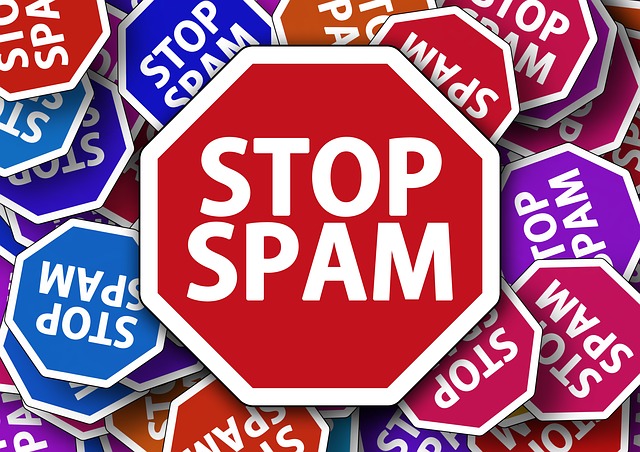Email has been a part of marketing strategy even before digital marketing came to be. Most companies do it to this day because it remains an effective way to promote a brand online. Hence, email marketing continues to adapt to the current digital ecosystem through the measure of its effectiveness.
A key factor that displays the effectiveness of a brand’s email marketing campaign is deliverability. Email deliverability is the success of the delivery of an email to a recipient’s inbox. It’s one of the most crucial criteria that any marketer must prioritize to ensure their email marketing campaign is a success.
Why is that? It’s because many emails wind up getting sent to the spam folder. In fact, according to the Email Deliverability Benchmark Report by Return Path in 2017, 20% of emails never reach the inbox.
20% is a lot, especially if you spend hours sending out emails to market your brand. You can’t ignore that because those are all lost opportunities to collect leads.
You’d want your emails to be delivered to your recipients’ inboxes and not just be delivered, but delivered successfully. As a marketer, that’s where your focus should be. To learn more about deliverability, let’s have a look at how it works and some steps you can take to improve yours.
The delivery path of an email
An email’s journey begins when you click send. During an email marketing campaign, your recipients are the ones on your mailing list. Once you send your emails out, some of them will get sent, and some won’t.
Why won’t some emails get sent? That’s because certain subscribers have revoked their consent to receive emails. If your recipient has done that, your email service provider (ESP) will suppress your email for that address, effectively canceling the sending process to that specific address.
Most of your emails that were sent successfully will be delivered to your recipients’ inboxes. The remaining ones that weren’t delivered or sent, either got a soft bounce or a hard one. This is all a part of how a digital marketing company measures the success of your email marketing campaigns.
A hard bounce means that you tried to send an email to an invalid address. A soft bounce happens for a couple of reasons: one – when your recipient’s inbox has reached its maximum capacity; two – when there’s a sudden change in your sending volume, which Internet service providers (ISPs) are not really fond of. This is why ISPs establish sending limits for every emailer, and when you hit it, your emails will get soft bounced.
The emails that were sent and delivered either reach the inbox or they don’t. Messages that aren’t in the inbox were either blocked by the receiver or caught by a spam trap. A spam trap is an unmanned email address owned by an ISP. ISPs use these emails to trap spam messages.
Your delivered emails are then opened by your recipients to read them. Upon reading it, they’ll decide what action to take. They’ll either do nothing, unsubscribe from your mailing list or mark it as spam.

Best practices to improve email deliverability
1. Clean your mailing list
If you notice that your emails are getting hard bounces, that means you’re sending too many emails to invalid addresses. You should clean your mailing list to try and reduce the invalid addresses. You can do so by validating the emails that you gather from your current newsletter subscription campaign.
You can validate recipients on your mailing list through a confirmed opt-in. A confirmed opt-in is an email your recipients receive to verify they want to subscribe to your mailing list. By doing so you’ll have a way to know for sure that the addresses on your mailing list are valid.
You can also group or segment the emails that weren’t sent successfully into one folder on your ESP. That folder will serve as your suppression list. It can take time but is still a practical and effective way to reduce your hard bounce rate. Some spam traps are recycled emails, and you’ll get a hard bounce notification when you send an email to a recycled spam trap email.
2. Increase your sending volume slowly
As previously mentioned, soft bounces can happen when you hit the sending limit set by your ISP. That’s an obstacle you have to try and avoid if you want to increase your leads. Take note that the sending limit can vary depending on how frequently you send out your emails.
It can either be daily or weekly, but it depends on your sending reputation. An email sender’s reputation is a score that your ISP assigns to you. If your spending reputation falls below the standard score, your ISP may send your messages to your recipients’ spam folders or reject them all together.
It’s important that you focus on not hitting the sending limit. Manage your sending volume by slowly increasing it throughout a specific time period. For example, if you have an email marketing campaign regarding the 4th of July celebrations, you should increase your sending volume at least 30 days before July 4th.
Therefore, always test your email links thoroughly – send a test to yourself or at least click on each of them in the ESP preview window. And we recommend test-clicking on all the links, even the footer ones. That includes the unsubscribe link to ensure your opt-out mechanism works as intended.

3. Use segmentation
Segmentation is a win-win solution because it also helps increase your engagement. That in itself is a perfectly valid reason to give it a go. Ultimately, the goal of improving deliverability is for users to open your email, read it, and take the action which the CTA(s) in your email calls for.
By using segmentation, you increase the chances of your recipients opening and actually reading your emails, which in return improves your sending reputation. Improving your sending reputation boosts your email deliverability, so it’s a win-win. Segmentation means you group your mailing list recipients and send your emails to each segment, based on, for example, the recipients’ demographic, location, past purchases etc.
It also means you’ll have to tailor and personalize your messages for each segment to further boost the appeal of your emails. This approach takes a lot of time and effort but reaps good benefits. A study carried out by Mailchimp showed that segmented and personalized email marketing campaigns received 100.95% more clicks than non-segmented ones.
Concluding thoughts
Marketers should prioritize email deliverability to maximize their email marketing efforts. It’s a fundamental detail that spells with tremendous effects on gathering enough leads and increasing conversions. Keep on improving your deliverability to ensure that your time, effort, and money won’t go to waste.
Author’s Bio: Edwin Deponte is a motivational writer who is also passionate about anything digital and social media marketing-related. On his free days, he spends his time indulging in digital and social media marketing books.
